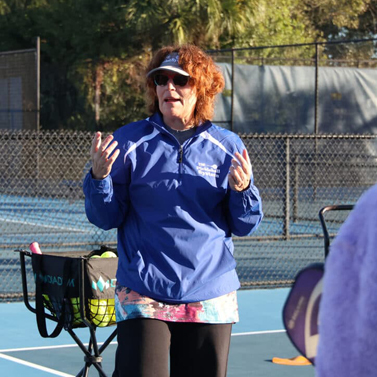How does the positioning of players on the court impact the dynamics of pickleball gameplay?
Controls Tempo and Strategy of the Match
Effective player positioning controls the tempo, dictates the narrative of the match, and creates opportunities for strategic plays. Just like chess pieces on a board, every move in pickleball is a calculated step towards victory.
When players are positioned closer to the net at the kitchen line, they exert more pressure on opponents, aiming for hard volleys and looking to end the point swiftly.
On the other hand, staying back in a defensive position allows for better returns against aggressive smashes and drives.
Determines the Flow of the Game
In pickleball, player positioning is crucial and can significantly impact the game’s dynamics. The court’s size in pickleball is smaller than that of a tennis court, which means that players need to be more strategic about their positioning and movement. The ability to control the net and the middle of the court can often determine the outcome of the game.
Positioning can also dictate the pace of the game. Players positioned at the baseline have more time to react to shots but covering the entire court from this position can be challenging. On the other hand, players at the net have less reaction time, but their proximity allows for a more aggressive style of play.
The positioning of players on the court is a major factor in pickleball gameplay. It determines the flow of the game, the strategies employed, and ultimately, the result of the match.
Makes or Breaks the Game
The court positioning of pickleball players is crucial to success. But one area of court positioning, in particular, is the most important by far: and that is the court positioning of the two teams at the beginning of each rally.
A court positioning dictated by the rules of our game. More specifically, pickleball’s rules award one team a positional advantage (if the team takes it) while the opposing team is saddled with a positional disadvantage. This positional advantage/disadvantage is at the heart of pickleball as it occurs each and every rally that is played and is, at most levels of play, the difference between winning and losing.
The framework that creates this pivotal structure of our game is derived from a rule that is seldom thought about – despite being the second most important rule in our game:
The Two-Bounce Rule. This rule allows the return team the opportunity to take the Non – Volley Zone line (the high ground) without impediment. This same rule makes it so that the serve team has to slog across the transition zone (the low ground) against an entrenched opponent if it is to secure the same court position.
Maintaining – or overcoming – the positional advantage of the return team is where most pickleball games are decided. This is true at all levels but is particularly evident at levels up to 4.0 where more rallies are determined before the disadvantage has been overcome. Even at higher levels of play, a small difference in the ability to overcome the positional disadvantage makes the difference between winning and losing.
While there are other court positioning concepts that are important, none can compare to the importance of the positional advantage/disadvantage that is inherent in the framework of pickleball.
Here are two takeaways that players can apply to improve their play within this better understanding of the game:
1. When on the return team, do your best to capitalize on the advantage given to you by the rules. This includes having both players up at the NVZ line at the moment of the fourth shot. This is how you will slow your opponents down from scoring and lose less games.
2. When on the serve team, hit slow shots that drop behind the net, allowing you and your partner time and protection so that you can move up to your NVZ line and overcome the disadvantage. This is how you will score more points and win more games.
Court positioning is critical to your success as a pickleball player and the positional tug of war between the return and serve teams is the most important court positioning of all. The better you become at winning the tug of war, the better you will play pickleball.
Pressures The Opponent, Leads To Offensive Opportunities
● Net Presence: The most common positioning in pickleball is for both players to stand at the non-volley zone (the kitchen). This positioning puts pressure on the opponents and leads to offensive opportunities.
● Covering the Court: Players need to move laterally and cover the entire court efficiently. Good positioning ensures that there are no gaps in court coverage, making it difficult for opponents to place shots in open areas. Communication and coordination between partners are essential to maintain proper court coverage.
● Attacking and Defending: The positioning of players can be used strategically to attack and defend effectively. Players can move forward to the non-volley zone for aggressive net play, or they can move back to the baseline for defensive shots. Switching between these positions during a rally can keep opponents off balance.
● Poaching: In doubles, pickleball players may occasionally poach, which means crossing the centerline to intercept their opponent’s shot. Proper timing and communication with your partner are essential for successful poaching. This aggressive positioning can surprise opponents and lead to winning shots.
Colby Stoker
Christopher
Crucial to Maximizing Chances of Winning
The positioning of players on the court is a crucial aspect of pickleball gameplay. It can impact the game dynamics in several ways, such as determining the server and receiver, the direction of the ball, and the placement of shots. The positioning of players can also affect the speed and pace of the game, as well as the strategy used by each team.
Players need to be aware of their position on the court and adjust their movements accordingly to maximize their chances of winning. There are several resources available online that provide guidance on where to stand on the court, including serving and returning positions, defensive positioning, and court positioning for singles and doubles games.



